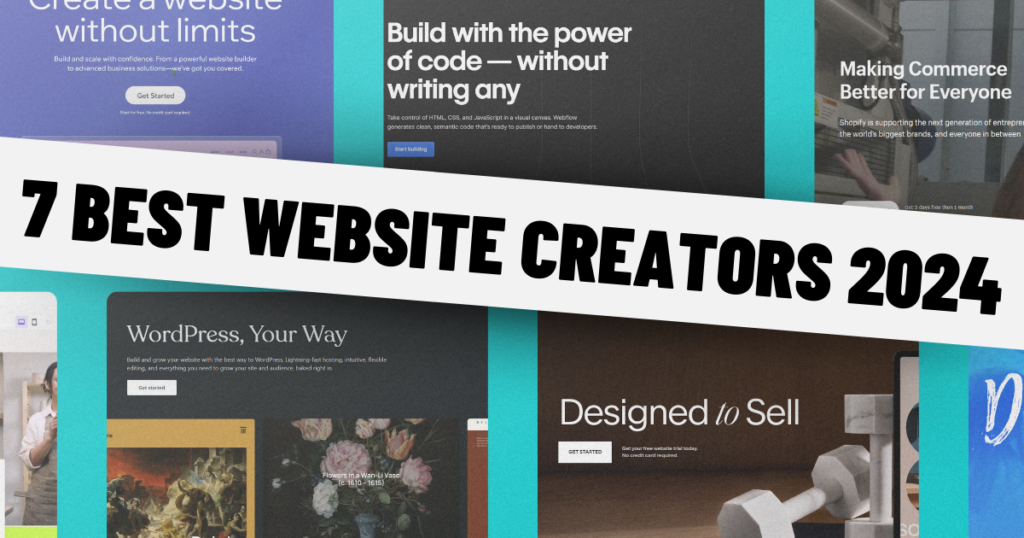Have you ever felt overwhelmed by the thought of designing a website? Whether you’re starting from scratch or looking to revamp an existing site, the process can seem daunting. You might wonder where to begin, what tools to use, and how to ensure your site looks professional. But don’t worry, you’re not alone.
Web design isn’t just about making a site look good. It’s about creating an experience that’s engaging and easy to navigate. And the good news? You don’t need to be a tech wizard to design a great website. With a clear understanding of the basics and a few practical tips, you can build a site that not only looks fantastic but also functions seamlessly.
In this article, you’ll learn exactly how web design works, from the essential elements of good design to the step-by-step process of creating a website. By the end, you’ll have the knowledge and confidence to design a website that truly represents your vision and engages your audience.

What is Web Design?
Web design is the process of creating the visual layout, user interface, and overall aesthetic of a website. It involves planning and conceptualising elements like text, images, graphics, and interactive features to create a cohesive and functional website.
Definition and Importance
At its core, web design is about problem-solving and communication. A well-designed website effectively communicates its message, engages users, and achieves its goals—whether that’s providing information, selling products, or building a brand.
Why is Web Design Important?
First Impressions Matter
Your website is often the first interaction people have with your brand. A well-designed site creates a positive impression and encourages visitors to explore further.
User Experience
Good web design ensures that your site is easy to navigate, which enhances user satisfaction and retention. Poor design can frustrate users and drive them away.
Trust and Credibility
A professional-looking website builds trust and credibility with your audience. An outdated or poorly designed site can make users question your legitimacy.

Difference Between Web Design and Web Development
It’s essential to understand the distinction between web design and web development, as both are crucial to creating a successful website.
Web Design:
Focuses on Aesthetics
Web design is concerned with the visual aspects of the website. This includes layout, colour schemes, typography, and overall style.
User Interface (UI) Design
Web designers create the look and feel of the site, ensuring that the interface is user-friendly and visually appealing.
Tools
Designers often use tools like Adobe XD, Sketch, Figma, and Photoshop to create their designs.
Web Development:
Focuses on Functionality
Web development involves turning the design into a functional website. This includes writing code and building the backend infrastructure.
Front-End and Back-End
Front-end developers handle the part of the website that users interact with, using languages like HTML, CSS, and JavaScript. Back-end developers manage server-side aspects, databases, and application logic.
Tools and Technologies
Developers use various programming languages and frameworks like React, Angular, Node.js, and PHP.
Understanding both web design and web development helps in appreciating how a website is created from concept to completion. While designers focus on how the site looks and feels, developers ensure it works seamlessly and efficiently.
Key Elements of Web Design
To create a website that is both visually appealing and user-friendly, you need to understand the key elements of web design. These elements form the foundation of any effective website and include visual design principles, user experience (UX) design, user interface (UI) design, and responsive design.
Visual Design Principles
Colour
The choice of colours can significantly impact the mood and usability of your website. Use a colour scheme that aligns with your brand and is visually harmonious. Ensure sufficient contrast between text and background to enhance readability.
Typography
The fonts you choose should be legible and consistent throughout your site. Use a combination of fonts to create a hierarchy and guide the reader’s attention, but avoid using too many different fonts as it can create visual clutter.
Layout
A well-organised layout helps guide users through your content. Use grids to create a structured layout, and ensure there is enough white space to make the content breathable and easy to read.
User Experience (UX) Design
UX design focuses on how users interact with your website. It aims to create a seamless and enjoyable experience for the user. Key aspects of UX design include:
Navigation
Your website should have a clear and intuitive navigation structure. Users should be able to find what they’re looking for with minimal effort.
Loading Speed
Slow-loading websites can frustrate users and lead to higher bounce rates. Optimise images and other elements to ensure your site loads quickly.
Accessibility
Your website should be accessible to all users, including those with disabilities. Use alt text for images, provide transcripts for audio content, and ensure your site can be navigated using a keyboard.
User Interface (UI) Design
UI design is about the look and feel of your website’s interface. It involves designing buttons, menus, and other interactive elements. Key principles of UI design include:
Consistency
Keep the design elements consistent throughout your site. This includes colours, fonts, and button styles.
Feedback
Provide visual or auditory feedback for user actions. For example, buttons should change appearance when clicked to show they’ve been activated.
Simplicity
Avoid clutter and keep the interface as simple as possible. Users should be able to understand and interact with your site without confusion.
Responsive Design
With the increasing use of mobile devices, it’s essential to ensure your website looks and functions well on all screen sizes. Responsive design involves creating a flexible layout that adjusts to different screen sizes. Key aspects of responsive design include:
- Fluid Grids: Use a grid system that scales with the screen size.
- Flexible Images: Ensure images resize proportionally to fit different screen sizes.
- Media Queries: Use CSS media queries to apply different styles based on the device’s characteristics, such as screen width.
The Web Design Process
Designing a website can seem like a daunting task, but breaking it down into manageable steps makes it more approachable. Here’s a comprehensive look at the web design process:
Planning
Setting Goals
- Identify Objectives: Determine what you want your website to achieve. Is it for selling products, providing information, or showcasing a portfolio? Clear goals will guide your design decisions.
- Define Metrics: Establish how you will measure the success of your website. Metrics could include visitor numbers, conversion rates, or user engagement.
Understanding the Audience
- Research: Learn about your target audience. What are their needs, preferences, and behaviours? Tools like surveys and analytics can provide valuable insights.
- Personas: Create detailed personas representing your typical users. This helps in designing a user-centric website.
Creating a Site Map
- Structure: Outline the structure of your website. A site map visually represents the hierarchy of pages and helps in organising content logically.
- Content Planning: Decide what content is needed for each page. This ensures that you provide valuable information and a clear path for users to follow.
Design
Wireframes
- Blueprint: Wireframes are basic layouts of your web pages, focusing on structure and functionality without distractions of colour or graphics. They help in visualising the placement of elements.
- Tools: Use tools like Sketch, Adobe XD, or even simple paper sketches to create wireframes.
Mockups
- Visual Design: Mockups add visual elements to wireframes. This includes colour schemes, typography, and imagery. They provide a more detailed preview of the final design.
- Feedback: Share mockups with stakeholders or potential users to gather feedback before proceeding to development.
Choosing a Design Style
- Consistency: Ensure a consistent design style across your website. This includes using a coherent colour palette, typography, and imagery.
- Brand Identity: Reflect your brand’s identity in the design. This helps in creating a memorable and trustworthy user experience.
Development
Turning Designs into a Functional Website
- Coding: Use HTML, CSS, and JavaScript to bring your designs to life. You can also use website builders like WordPress or Webflow if coding isn’t your forte.
- Responsive Design: Ensure your website looks and functions well on all devices, including desktops, tablets, and smartphones.
Testing
Cross-Device Testing
- Compatibility: Test your website on different devices and browsers to ensure compatibility and a consistent user experience.
- Usability: Conduct usability testing to identify and fix any issues that could hinder user experience.
Performance Testing
- Speed: Check the loading speed of your website. Tools like Google PageSpeed Insights can help identify areas for improvement.
- Security: Ensure your website is secure, especially if it involves transactions or user data.
Launch and Maintenance
Going Live
- Final Checks: Before launching, do a final check to ensure everything is working correctly. This includes content accuracy, functional links, and visual elements.
- SEO: Implement basic SEO practices to improve your website’s visibility on search engines.
Keeping the Site Updated
- Content Updates: Regularly update your content to keep it relevant and engaging.
- Technical Maintenance: Keep the website’s software, plugins, and security measures up to date.

Choosing the Right Tools and Resources
Navigating the myriad of tools and resources available for web design can be overwhelming. Here’s a guide to help you choose the right ones for your needs.
Popular Web Design Tools
Adobe XD
- Overview: Adobe XD is a powerful design and prototyping tool for creating user interfaces. It offers vector-based design capabilities, making it perfect for high-fidelity designs.
- Key Features: Wireframing, interactive prototypes, responsive design, and collaboration tools.
- Pros: Integrates seamlessly with other Adobe Creative Cloud apps, and offers robust design and prototyping features.
- Cons: Can be complex for beginners and requires a subscription.
Figma
- Overview: Figma is a cloud-based design tool that facilitates real-time collaboration. It’s known for its ease of use and flexibility.
- Key Features: Collaborative design, prototyping, and design systems.
- Pros: Great for team collaboration, accessible from any device with internet access, free plan available.
- Cons: Some advanced features require a paid plan.
Sketch
- Overview: Sketch is a vector graphics editor primarily used for interface design. It’s popular among designers for its simplicity and powerful features.
- Key Features: Vector editing, prototyping, and plugins for extended functionality.
- Pros: Intuitive interface, vast plugin ecosystem, widely used in the design community.
- Cons: Mac-only applications, require third-party tools for collaboration.
WordPress
- Overview: WordPress is a content management system (CMS) that powers over 40% of websites on the internet. It’s known for its flexibility and user-friendly interface.
- Key Features: Customisable themes, plugins for extended functionality, and a robust content editor.
- Pros: Easy to use, extensive community support, and a vast library of themes and plugins.
- Cons: Can be vulnerable to security issues if not properly maintained, some themes and plugins require payment.
Webflow
- Overview: Webflow is a website builder that allows designers to create responsive websites visually. It bridges the gap between design and development.
- Key Features: Visual web design, CMS, and hosting services.
- Pros: No coding required, powerful design capabilities, integrated CMS and hosting.
- Cons: Steeper learning curve, can be expensive compared to other website builders.
Online Resources and Communities
W3Schools
- Overview: W3Schools offers comprehensive tutorials and references on web development languages, including HTML, CSS, JavaScript, and more.
- Pros: Free, easy to follow, covers a wide range of topics.
- Cons: Can be too basic for advanced users.
MDN Web Docs
- Overview: MDN Web Docs is a resource for developers, providing detailed documentation and tutorials on web technologies.
- Pros: In-depth, reliable, and maintained by Mozilla.
- Cons: More technical and detailed, which can be overwhelming for beginners.
Awwwards
- Overview: Awwwards is a platform that showcases outstanding web design and provides inspiration.
- Pros: Great source of inspiration, highlights cutting-edge design trends.
- Cons: Primarily focused on showcasing rather than teaching.
Stack Overflow
- Overview: Stack Overflow is a community-driven Q&A site for programmers. It’s an invaluable resource for troubleshooting and advice.
- Pros: Fast responses, community-vetted answers, covers a vast range of topics.
- Cons: Can be difficult to find specific design-related answers.
YouTube
- Overview: YouTube hosts countless tutorial videos on web design and development.
- Pros: Free, diverse content, visual and easy to follow.
- Cons: Quality varies, and requires sorting through to find the best tutorials.
Practical Tips for Effective Web Design
Designing a website involves more than just aesthetics; it’s about creating an intuitive, engaging experience for users. Here are some practical tips to ensure your web design is effective and user-centric.
Keeping the User in Mind
User-Centric Design
- Understand User Needs: Prioritise the needs and preferences of your users. Use tools like user surveys, feedback forms, and analytics to gather insights.
- Intuitive Navigation: Ensure your website’s navigation is straightforward and logical. Users should find what they’re looking for with minimal effort.
- Accessibility: Design your website to be accessible to all users, including those with disabilities. Use proper HTML tags, provide alt text for images, and ensure sufficient colour contrast.
Visual Hierarchy
- Prioritise Content: Use visual hierarchy to guide users’ attention to the most important elements first. Techniques include varying font sizes, using bold colours, and strategically placing content.
- Whitespace: Don’t overcrowd your pages. Adequate whitespace improves readability and allows users to focus on key elements.
Staying Updated with Design Trends
Follow Industry Trends
- Research Regularly: Stay informed about the latest web design trends by following design blogs, attending webinars, and participating in design communities.
- Incorporate Trends Thoughtfully: While it’s important to stay current, ensure that any trends you adopt enhance usability and align with your brand.
Responsive Design
- Mobile-Friendly: Ensure your website is fully responsive, providing an optimal viewing experience across devices. Use flexible grids, images, and CSS media queries to achieve this.
Gathering Feedback and Iterating
User Testing
- Conduct Usability Tests: Regularly test your website with real users to identify pain points and areas for improvement. Tools like UserTesting and Hotjar can help.
- Analyse Feedback: Use the feedback from usability tests to make informed design changes. Continuously iterating based on user input leads to a more refined and effective website.
Analytics
- Monitor Performance: Use analytics tools like Google Analytics to track user behaviour and website performance. Key metrics include page views, bounce rates, and conversion rates.
- Make Data-Driven Decisions: Analyse the data to understand how users interact with your site and identify areas for improvement.
What’s Next?
Designing an effective website is a continuous process that requires attention to detail, user feedback, and staying updated with industry trends. By keeping the user in mind, maintaining a clear visual hierarchy, staying current with design trends, and iterating based on feedback, you can create a website that is not only visually appealing but also functional and user-friendly.
Recap of Main Points:
- Understand the fundamentals of web design, including planning, design, development, testing, and maintenance.
- Choose the right tools and resources to support your design process.
- Follow practical tips to keep your design user-centric and responsive.
- Continuously gather feedback and use analytics to improve your website.
Embarking on your web design journey might seem challenging at first, but with the right approach and tools, it can be a rewarding experience. Remember that every successful website starts with a solid understanding of its purpose and audience. Don’t be afraid to experiment and make mistakes, as they are valuable learning opportunities. Whether you’re designing your first website or looking to improve an existing one, the key is to stay user-focused and adaptable. By prioritising usability, accessibility, and responsiveness, you’ll be able to create a website that not only looks great but also serves its intended purpose effectively. So, start planning, designing, and refining. With patience and persistence, you’ll soon have a website that stands out and meets your goals. Happy designing! For more insights, read these helpful blogs on web design: Will Web Design Be Replaced By AI? and Will Web Design Be Automated?




